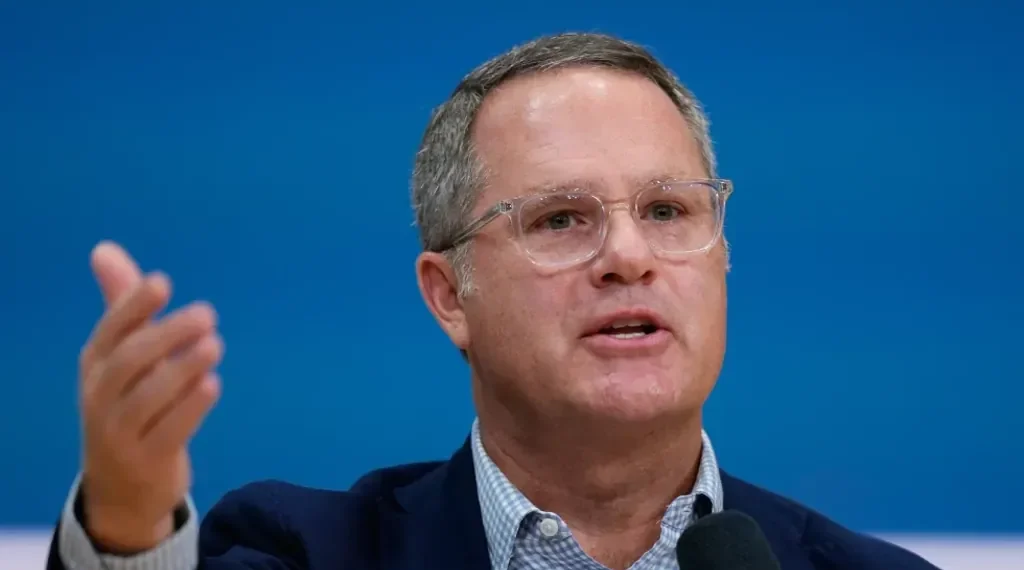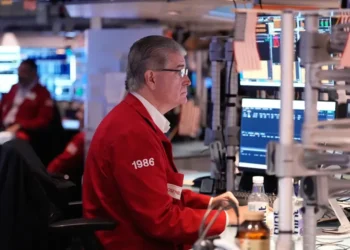Walmart Leadership Transition Marks End of Doug McMillon’s Transformative Tenure
Doug McMillon, who guided Walmart through one of the most ambitious modernization periods in its history, will retire early next year after a decade as chief executive. Walmart confirmed on Friday that McMillon, 59, will step down on January 31, with John Furner, the head of Walmart U.S., assuming the role the following day. The announcement prompted a brief decline in Walmart shares, which fell 3% in premarket trading before partially recovering.
McMillon, who began his Walmart career as an hourly associate in the 1980s, leaves behind a markedly different company from the one he inherited in 2014. During his tenure, Walmart expanded its digital infrastructure, modernized supply chain operations, and repositioned itself as a more technology-driven and socially responsive global retailer. Walmart Chairman Greg Penner said McMillon “led a comprehensive transformation” that strengthened the company’s long-term strategy.
A Leadership Change During a Complex Economic Landscape
Furner, 51, will take charge at a time when retailers continue to navigate shifting consumer behavior, inflationary pressures, and evolving global trade policies. Walmart has spent nearly a year adapting to a volatile economic environment shaped by tariff policies and immigration-related labor shortages under the Trump administration, which influenced supply chains and workforce availability across multiple industries.
Walmart remains the world’s largest retailer and the largest private employer in the United States, with 1.6 million U.S. workers and a global workforce of 2.1 million. Its influence extends far beyond retail. Economists and policymakers monitor the company’s performance as an indicator of U.S. consumer demand, given that Walmart estimates 90% of American households rely on its stores or e-commerce platforms.
McMillon’s Rise and His Blueprint for Modernization
A University of Arkansas graduate, McMillon joined Walmart in 1984 and worked in various operational and executive roles before succeeding Mike Duke as CEO. When he took the helm, Walmart faced declining store traffic, lagging digital capabilities, and low employee morale. McMillon prioritized investment in workers, committing billions toward wage increases, expanded parental leave, and new education programs that enabled employees to earn certificates and degrees at reduced cost.
He also pushed the company to embrace technology in ways that reshaped its core business. Walmart adopted automation, robotics, and artificial intelligence across its logistics network, accelerating the shift to omnichannel retail. These changes modernized distribution centers, streamlined delivery systems, and allowed Walmart to compete more effectively with Amazon in e-commerce.
McMillon also sought to improve Walmart’s public image. Under his leadership, the company strengthened sustainability commitments, including reducing carbon emissions and expanding renewable energy use. He also engaged directly with frontline workers and supported initiatives that repositioned Walmart as a more socially conscious global brand.
Financial Expansion and Investor Reaction
McMillon’s decade as CEO delivered significant financial growth. Walmart’s annual revenue rose 40% over the period—from $485.7 billion in his first fiscal year to $681 billion in the most recent one. The company’s share price climbed from around $25 to more than $102, reflecting long-term investor confidence in its strategic transformation.
His tenure was not without turbulence. In 2015, Walmart announced a $2.7 billion investment to raise wages and fund employee education, a move that temporarily pressured profits. When McMillon lowered the company’s sales forecast that year, Walmart shares dropped sharply, erasing $21.5 billion in market value in a single day. Over time, improved sales performance, higher employee retention, and expanded digital services helped restore investor confidence.
TD Cowen analyst Oliver Chen said Furner brings “robust experience” in managing Walmart’s largest division, predicting continuity in the company’s strategy. He noted, however, that succeeding McMillon “won’t be easy,” describing the outgoing CEO as both visionary and grounded.
Policy Decisions and Operational Shifts Under McMillon
McMillon oversaw several decisions that reshaped Walmart’s public policy footprint. In 2019, the company stopped selling certain ammunition types and asked customers not to openly carry firearms in stores, a shift announced shortly after mass shootings in Texas and at a Walmart store in El Paso. The move marked one of the most significant retail policy changes on firearms in recent decades.
Walmart also invested heavily in e-commerce and last-mile delivery operations. By August, the company said one-third of deliveries from U.S. stores involved three-hour-or-less turnaround times, with 20% completed within 30 minutes. Walmart+—its membership program launched to compete with Amazon Prime—expanded delivery perks, streaming benefits, and fuel discounts, supporting its broader digital strategy.
Navigating a Global Health Crisis and Economic Uncertainty
The COVID-19 pandemic tested Walmart’s global operations. As consumers shifted to remote work and home-based living, Walmart experienced strong sales growth driven by demand for groceries, household goods, and essential supplies. The company used its scale to minimize supply chain disruptions, worked closely with suppliers to maintain inventory, and kept prices relatively stable during a period of global inflation.
Walmart also attracted more high-income shoppers during the inflation surge as consumers sought lower prices amid rising costs. The company’s affordability strategy remains central to its long-term positioning, especially during periods of economic uncertainty.
McMillon was among several retail leaders who met with President Donald Trump at the White House to discuss tariffs and their impact on import costs. Walmart said it absorbed some additional fees, though prices increased in select product categories. McMillon told analysts that the company aimed to keep prices “as low as we can for as long as we can.”
Incoming CEO John Furner’s Path to Leadership
Furner began his Walmart career in 1993 as an hourly associate in Bentonville and worked across merchandising and international divisions before becoming president of Sam’s Club. He later assumed leadership of Walmart U.S., where he focused on improving store operations, expanding online services, and strengthening the retailer’s integrated supply chain.
He enters the CEO role with experience managing Walmart’s largest business unit during one of the most disruptive periods in modern retail. Analysts expect him to build on McMillon’s strategy, balancing cost efficiency, digital investment, and employee retention.
As part of the transition, McMillon will serve as an adviser for one year to support continuity. Walmart emphasized that the leadership change comes as the company prepares for long-term growth in automation, artificial intelligence, and global e-commerce.
This article was rewritten by JournosNews.com based on verified reporting from trusted sources. The content has been independently reviewed, fact-checked, and edited for accuracy, tone, and global readability in accordance with Google News standards.
Stay informed with JournosNews.com — your trusted source for verified global reporting and in-depth analysis. Follow us on Google News, BlueSky, and X for real-time updates.
JournosNews.com follows Google News content standards with original reporting, verified sources, and global accessibility. Articles are fact-checked and edited for accuracy and neutrality.










